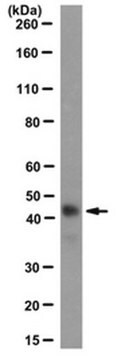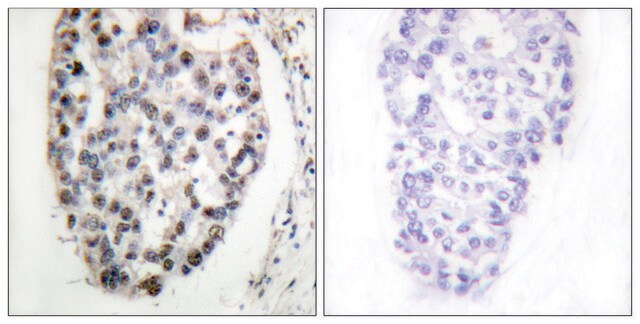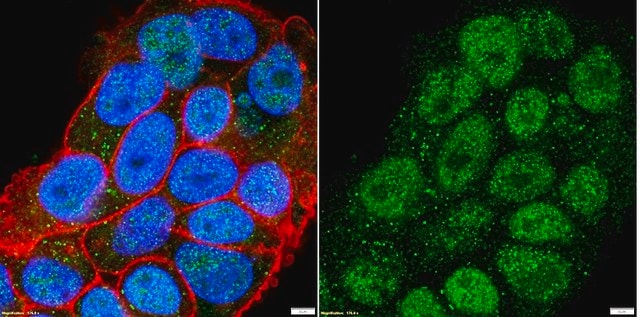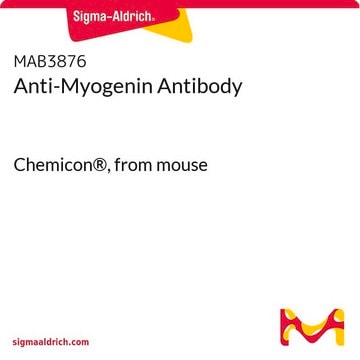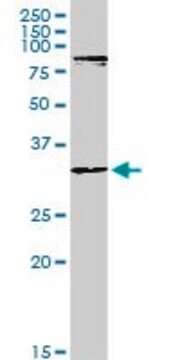M6190
Monoclonal Anti-MYOD1 antibody produced in mouse
clone 5.2F, purified immunoglobulin, buffered aqueous solution
Sinonimo/i:
Anti-Myogenic Differentiation Antigen 1
About This Item
Prodotti consigliati
Origine biologica
mouse
Livello qualitativo
Coniugato
unconjugated
Forma dell’anticorpo
purified immunoglobulin
Tipo di anticorpo
primary antibodies
Clone
5.2F, monoclonal
Forma fisica
buffered aqueous solution
PM
antigen 34 kDa
Reattività contro le specie
human, rat, chicken, mouse
Concentrazione
1.0 mg/mL
tecniche
immunocytochemistry: suitable
immunohistochemistry (formalin-fixed, paraffin-embedded sections): 2-4 μg/mL
immunohistochemistry (frozen sections): 2-4 μg/mL
immunoprecipitation (IP): 2 μg using 1 mg protein lysate
western blot: 1 μg/mL (reacts with the ~45 kDa protein)
Isotipo
IgG2a
N° accesso UniProt
Condizioni di spedizione
wet ice
Temperatura di conservazione
−20°C
Informazioni sul gene
human ... MYOD1(4654)
mouse ... Myod1(17927)
rat ... Myod1(337868)
Descrizione generale
Immunogeno
Applicazioni
- immunofluorescence staining at a 1:50 dilution
- western blotting
- immunostaining at a 1:300 dilution
Azioni biochim/fisiol
Stato fisico
Esclusione di responsabilità
Not finding the right product?
Try our Motore di ricerca dei prodotti.
Raccomandato
Codice della classe di stoccaggio
10 - Combustible liquids
Classe di pericolosità dell'acqua (WGK)
nwg
Punto d’infiammabilità (°F)
Not applicable
Punto d’infiammabilità (°C)
Not applicable
Certificati d'analisi (COA)
Cerca il Certificati d'analisi (COA) digitando il numero di lotto/batch corrispondente. I numeri di lotto o di batch sono stampati sull'etichetta dei prodotti dopo la parola ‘Lotto’ o ‘Batch’.
Possiedi già questo prodotto?
I documenti relativi ai prodotti acquistati recentemente sono disponibili nell’Archivio dei documenti.
Il team dei nostri ricercatori vanta grande esperienza in tutte le aree della ricerca quali Life Science, scienza dei materiali, sintesi chimica, cromatografia, discipline analitiche, ecc..
Contatta l'Assistenza Tecnica.